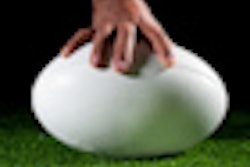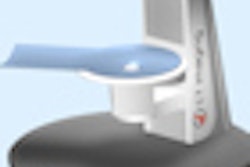Dear AuntMinnieEurope Member,
Thoracic injuries among professional rugby players are less common than lower-limb damage, but they can be hard to detect and may have serious long-term implications. Imaging's contribution is vital in such cases, delegates learned at the recent RSNA 2012 congress.
Sports injuries to the hand -- including skier's thumb, climber's finger, and boxer's knuckle -- were also covered at the meeting in Chicago. For an update on sports imaging, click here.
Contrast-enhanced mammography improves sensitivity without decreasing specificity, and is increasingly useful in symptomatic women as an adjunct to mammography, researchers from Berlin reported at the same meeting. Go to our Women's Imaging Digital Community, or click here.
Dr. Gabriel Krestin, president of the European Society of Radiology, must have been in a celebratory mood last week, when sense finally prevailed and a European Parliament committee voted to exempt MRI workers from the electromagnetic fields directive. But Krestin and others are still concerned about what 2013 might bring. Find out why in our MRI Digital Community, or by clicking here.
The Portuguese made an immense contribution to the development of radiology in the first half of the 20th century. History expert Dr. Adrian Thomas thinks we should salute the work of Egas Moniz, Reynaldo dos Santos, and others. Visit our Digital X-Ray Community, or click here.
Developments in the Netherlands have also caught our eye this week. First, we had a news report about the potential of computer-aided diagnosis as a tool to aid radiologists in finding cancer originating from the prostate's central gland. Click here for that article.
Second, our latest PACS case study focused on Refaja Hospital, a 200-bed regional facility southeast of Groningen. To learn more, click here.
And finally, we reported on a lively panel discussion about the future of molecular imaging, held last month in Leiden, the Netherlands. Get that story here.




















